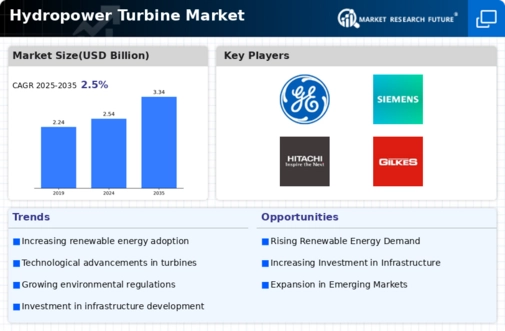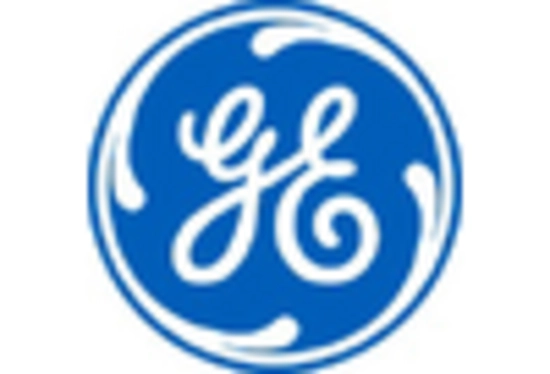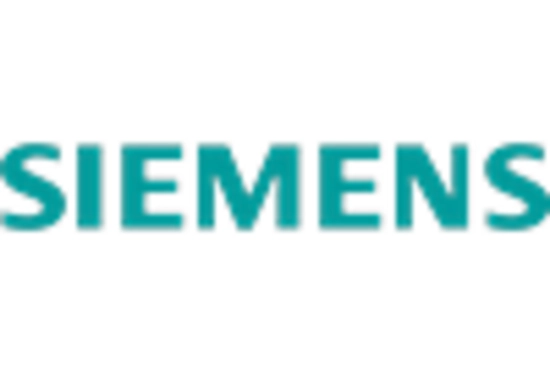Increasing Energy Demand
The rising The Hydropower Turbine Industry. As populations grow and economies expand, the need for sustainable and reliable energy sources intensifies. Hydropower, being one of the most established renewable energy sources, is poised to meet this demand effectively. According to recent data, hydropower accounts for approximately 16 percent of the world's electricity generation. This statistic underscores the critical role of hydropower turbines in addressing energy shortages while promoting environmental sustainability. The increasing energy demand is likely to propel investments in hydropower projects, thereby enhancing the market for hydropower turbines.
Technological Innovations
Technological innovations are transforming the Hydropower Turbine Market, leading to enhanced efficiency and reduced operational costs. Advances in turbine design, materials, and control systems are enabling the development of more efficient turbines that can operate in a wider range of conditions. For instance, the introduction of variable speed turbines has shown potential to increase energy output by up to 10 percent compared to traditional models. Furthermore, innovations in digital monitoring and predictive maintenance are improving the reliability and lifespan of hydropower systems. As these technologies continue to evolve, they are likely to attract further investment and interest in the hydropower sector, thereby bolstering the market for hydropower turbines.
Regulatory Frameworks and Incentives
Regulatory frameworks and incentives play a crucial role in shaping the Hydropower Turbine Market. Many countries are implementing policies that promote renewable energy sources, including hydropower, through subsidies, tax incentives, and favorable regulations. These supportive measures are designed to encourage investment in hydropower projects, making it more financially viable for developers. For example, certain regions have established feed-in tariffs that guarantee fixed payments for energy produced from hydropower, thus ensuring a stable revenue stream for investors. Such regulatory support is likely to enhance the attractiveness of hydropower projects, consequently driving the demand for hydropower turbines and fostering market growth.
Environmental Sustainability Initiatives
Environmental sustainability initiatives are increasingly influencing the Hydropower Turbine Market. As concerns about climate change and environmental degradation grow, there is a heightened focus on renewable energy sources that minimize ecological impact. Hydropower is often viewed as a cleaner alternative to fossil fuels, contributing to lower greenhouse gas emissions. Recent studies indicate that hydropower can reduce carbon emissions by up to 90 percent compared to traditional energy sources. This environmental advantage is prompting governments and organizations to invest in hydropower projects, thereby stimulating the demand for hydropower turbines. The alignment of hydropower with sustainability goals is likely to enhance its market position in the renewable energy landscape.
Investment in Renewable Energy Infrastructure
Investment in renewable energy infrastructure is a significant catalyst for the Hydropower Turbine Market. Governments and private entities are channeling substantial funds into renewable energy projects, with hydropower being a focal point due to its efficiency and reliability. In recent years, investments in hydropower have surged, with estimates suggesting that the sector could attract over 100 billion dollars in the next decade. This influx of capital is expected to facilitate the development of new hydropower plants and the modernization of existing facilities, thereby driving the demand for advanced hydropower turbines. Such investments not only enhance energy production but also contribute to job creation and economic growth.

















Leave a Comment